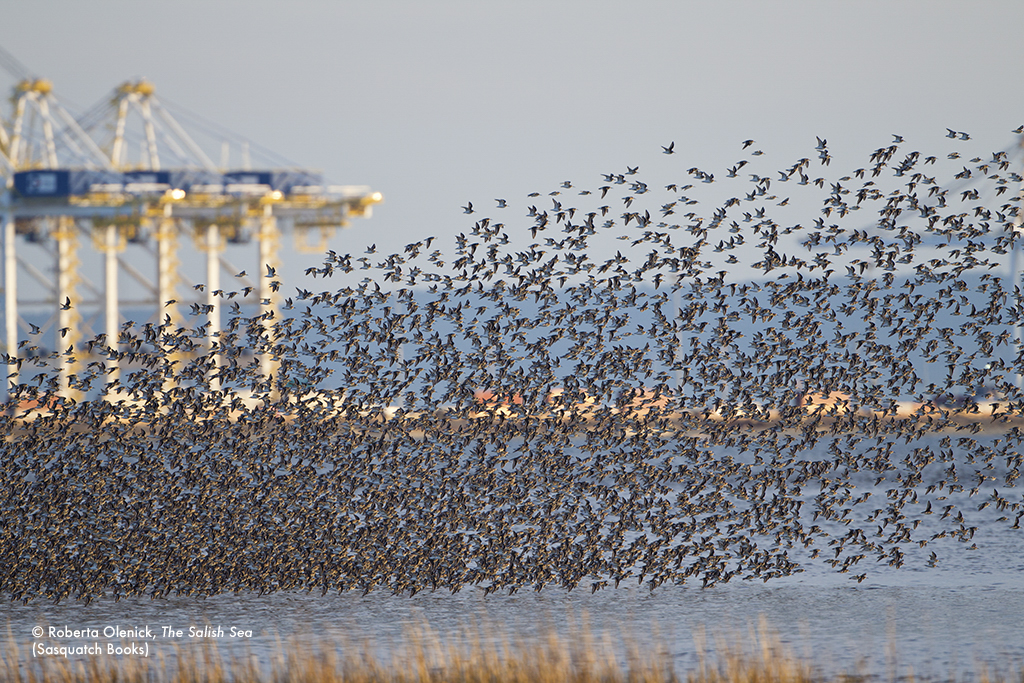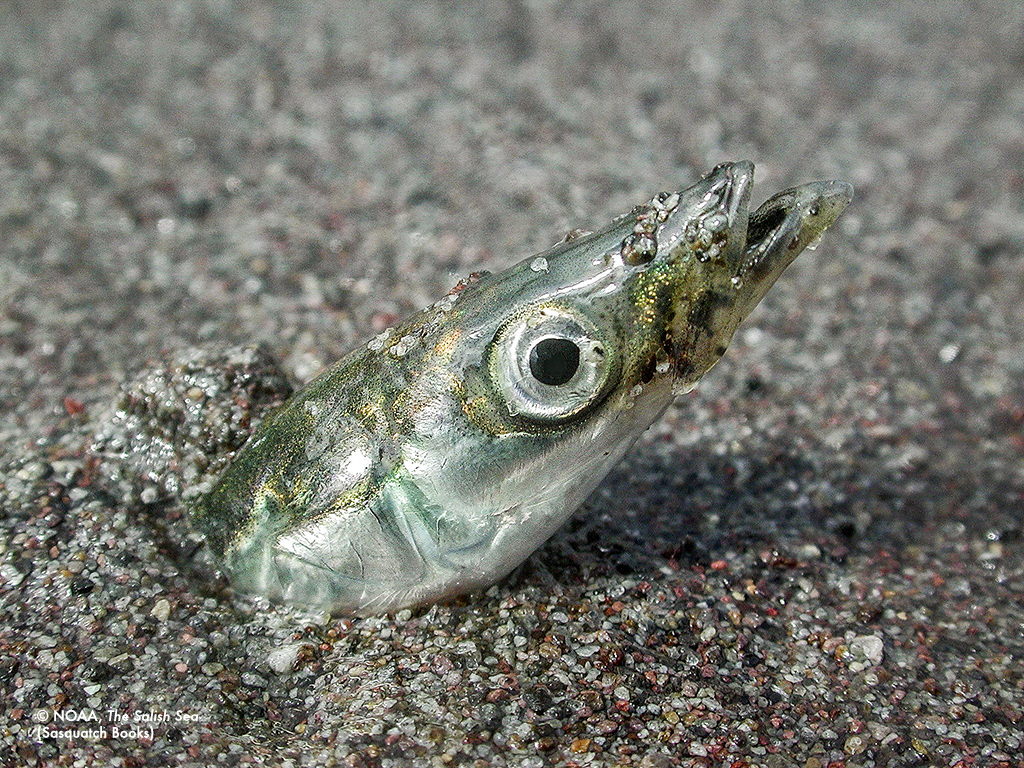Update March 2016
Thanks to the incredible support of our donors and of the many people in the region who love the ocean, SeaDoc's The Salish Sea: Jewel of the Pacific Northwest has sold fantastically well in its first year in print.The book spent 10 weeks on the Pacific Northwest Booksellers Association nonfiction bestseller list. It was also the #1 bestseller at our local Orcas Island bookshop, Darvill’s Books. (It sold 582 copies last year, more than double the number of copies sold of the second place book.)
The book has fulfilled our vision to help thousands of people see the beauty of the Salish Sea and join in efforts to protect and care for it.
Thank you to all of the people who helped underwrite the book and to everyone who bought a copy. And if you don’t have a copy, you can find one at your local bookstore or anywhere books are sold.
The Salish Sea region is an ecological jewel straddling the western border between Canada and the United States, connected to the Pacific Ocean primarily through the Strait of Juan de Fuca. There, lush and mossy old-growth forests meet waters with dazzlingly-colored anemones and majestic orcas.
SeaDoc's new book, The Salish Sea: Jewel of the Pacific Northwest by Audrey DeLella Benedict and Joseph K. Gaydos (Sasquatch Books; $24.95; March 2015), combines a scientist's inquiring mind, dramatic color photographs, and a lively narrative of compelling stories. This is the first book of its kind to describe the Salish Sea, whose name was not even officially recognized until 2008. One of the world’s largest inland seas, the Salish Sea contains 6,535 square miles of sea surface area and 4,642 miles of coastline. Fashioned by the violent volcanism of the Pacific Rim of Fire, plate tectonics, and the sculptural magic wrought by Ice Age glaciers, the Salish Sea is a unique ecosystem home to thousands of different species of mammals, birds, fish, reptiles, and macro-invertebrates.
Amongst breathtaking color photography, The Salish Sea takes a look at the region’s geology, fauna, and history, and ends with hope for the protection of its future. The reader is left with a sense of wonder for this intricate marine ecosystem and the life that it sustains.
Video by Colin Sternagel of Joe Gaydos giving a book talk
About the authors
Audrey DeLella Benedict is a biologist, a writer, and a passionate advocate for the conservation of the global ocean and Arctic and alpine environments the world over. She is founder and director of Cloud Ridge Naturalists, a nonprofit natural history educational organization now in its fourth decade. She is currently a member of the board of the SeaDoc Society and served for nearly a decade as a trustee for the Colorado chapter of The Nature Conservancy, from which she received the prestigious One Conservancy Award in 2003 for her work in Ecuador. Audrey splits her time between her home at 9,000 feet along the Colorado Front Range and her off-grid cottage on San Juan's Frost Island.
Joseph K. Gaydos is Chief Scientist for the SeaDoc Society, a marine science and conservation program focused on the Salish Sea. He is a licensed wildlife veterinarian and has a PhD in wildlife health. For over a decade he has been studying the fish and wildlife of the Salish Sea.
Interviews with the authors
- The Encyclopedia of Puget Sound interviewed Joe Gaydos and Audrey Benedict about the book. You can read the interview here.
- Joe was interviewed on KEXP's Sustainability Segment. Listen here or on iTunes. "The longer you look at a tidepool, the more you see."
- Joe was interviewed by KSER Radio in Everett for their Sound Living segment and by KTPZ in Port Townsend in their Nature Now segment.
- On June 1, Joe was interviewed by Terry Moore of CFAX in Vancouver, BC. The interview is on SoundCloud and begins about 36 minutes in. Listen.
- Also in Canada, Joe and Audrey were interviewed by CBC Radio The Early Edition with Rick Cluff, on CJSF Radio Endeavors, by Joseph Planta on The Commentary.ca, and were on live television on the Global News Noon News Hour with hosts Lynn Colliar and Jay Durant.
- The Vancouver Sun did a nice interview with Joe and Audrey in conjunction with their trip to Canada for World Oceans Day.
Book events
Authors Audrey Benedict and Joe Gaydos appeared across the region during April and May. Watch the video above to see the talk given at Third Place Books in the Seattle area, or watch the joint celebration of World Oceans Day hosted by the Georgia Strait Alliance and the Vancouver Aquarium.
Video of event at Vancouver Aquarium:
(Kevin Campion's film about the Salish Sea starts about 20 minutes in. Joe and Audrey's talk starts about 57 minutes in.)
Where to buy
The book is available at local independent bookstores and online. ISBN 978-1570619854.
Book reviews
SEA-media.org writes, "In just 148 pages, Benedict and Gaydos have captured the essence of the Salish Sea."
Readers learn about its nature and biology, geology and chemistry, animals, plants, and microorganisms. They learn of its Coast Salish past and its fishing, industrial, recreational, city and town present, and they learn of peoples’ place in its ecosystem. As beauty and perspective and appreciation flow off the pages into the minds of readers, a key objective of the authors is achieved: to connect people with their home.
The Vancouver Sun praised the book for being a "Richly-illustrated book [that] provides insight into the wonders of area."
The Salish Sea is a feast for the eyes, a high-quality publishing effort rich in glossy colour photos and fascinating biological information that is likely to surprise even someone well-versed in our marine waters.
Seattle Magazine featured the book in their March 2015 issue:
The new book The Salish Sea: Jewel of the Pacific Northwest (Sasquatch Books, $24.95) looks at these local waters through a scientific lens, illustrating the region’s unique geology (thanks to glaciers, plate tectonics and volcanoes) and vibrant marine ecology. Written by biologist Audrey DeLella Benedict with Joseph K. Gaydos, chief scientist for the SeaDoc Society (an Orcas Island–based conservation group focused on the Salish Sea), the book pairs bright, bold, photographs with fascinating facts about local sea creatures. (Did you know that the Salish Sea is home to the world’s largest species of barnacle, octopus and burrowing clam?)
Cascadia Weekly writes:
With every page studded with stunning photographs, this book is perfect for simply curling up and looking at the pictures. Bonus that the informative text by Audrey DeLella Benedict is parsed out in easy-to-ingest sections, science made interesting and relevant. Zoology, botany, past and present geology, anthropology, and issues related to the region’s economy are covered, with the emphasis always on species interdependency and teaching about the importance of keeping this ecosystem healthy for all its inhabitants.
The Bellingham Herald says:
I’ve saved the best for last – the book’s inclusion of nearly 200 color images from more than four dozen photographers, including Art Wolfe and neurologist/underwater photographer Marc Chamberlain. These enhance and inform the text more eloquently than I can describe – they are stunning illustrations of the magical place we call home.
The Islands' Sounder says:
From the icy summit of Mount Baker to mudflats of Fidalgo Bay to giant basking sharks of the deep to the alien-esque egg-yolk jellyfish, “The Salish Sea: Jewel of the Pacific Northwest” reveals a vast world that is hard to comprehend.
Christian Martin writes in Cascadia Weekly,
"Through maps, charts, satellite imagery, nature photography and writing, Benedict and Gaydos concoct an engaging presentation of the natural history of our “jewel of the Pacific Northwest.” Their mantra of “know, connect, protect and restore” is a hopeful way forward in to a challenging future.
Sharon Wooton wrote in the Everett Herald,
The book offers the bizarre and beautiful, alien shapes and streamlined bodies, the invisible and obvious, swimmers and flyers and floaters, endangered and countless, mud flats and forests, orcas and dying sea stars.
The High Country News writes,
Dozens of gorgeous color photographs reveal its intricate beauty, and the book ends with a ringing call to action and a vision for protecting the region. This volume itself is a step toward that goal: All the royalties from its sale will be donated to the Puget Sound-based marine conservation center, the SeaDoc Society.
Photographer Max Waugh writes,
[The book is] an eye-opener for those who think the cold waters of the Pacific Northwest don't house the same level of biodiversity as more well-known areas of the globe... From cover to cover, the volume is filled with bold, bright images showing off the amazing scenery and rich biodiversity of the region.














